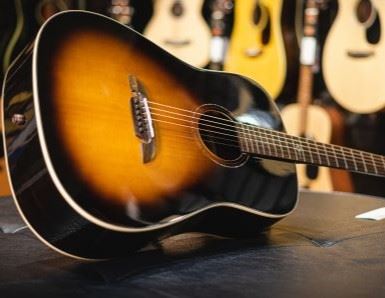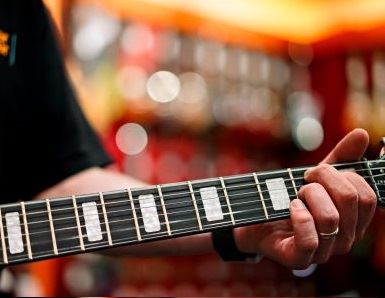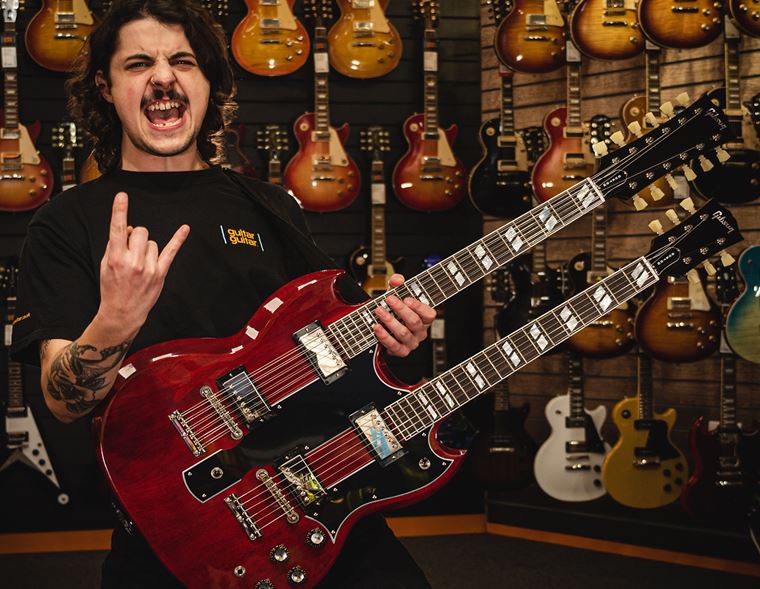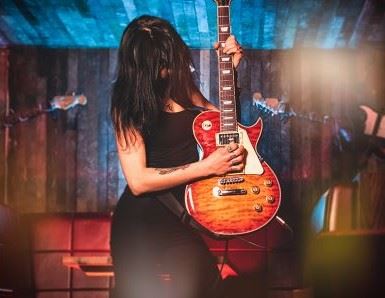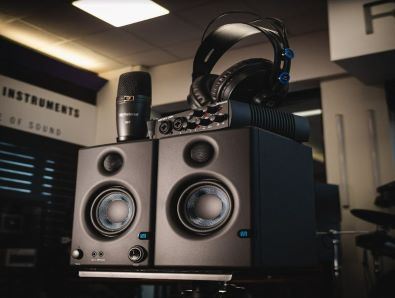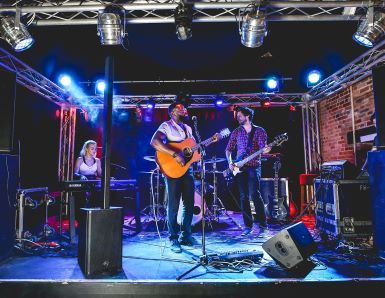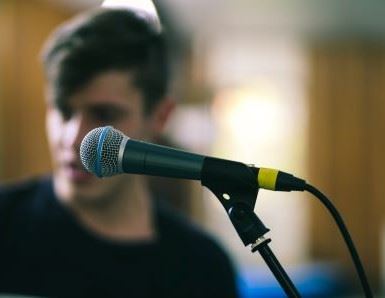Exploring the World of Distortion Pedals: A Comprehensive Guide
Published on 28 June 2023
Disclaimer: The information in this article is provided by the guest blogger and does not necessarily reflect the views and opinions of guitarguitar.
Distortion pedals are a great way to expand your sound and elevate riffs. There's nothing quite like stomping on your favourite overdrive or fuzz pedal and letting rip.
But, if you're new to guitar and pedals in general or you’ve never had the need to get your dirt from anything other than your amp then you might not know where to begin. This guide will take a comprehensive look at distortion pedals and explain the different types, how they shape your tone and how to choose the right one for you to take your playing to the next level.

Types of Distortion Pedals
There are a variety of different types of distortion pedals that each have their own characteristics and uses.
The main three types of distortion pedal are overdrive, distortion and fuzz.
Overdrive Pedals
Overdrive pedals provide a mild to moderate boost of gain and add warmth and some crunch to your sound. They don't have a major effect on the character and tone of the signal though, rather boosting what you already have.
They're perfect for creating that natural breakup you get when a tube amp is pushed to its limits. You'll also find them being used with high gain amps to tighten up the low end they often produce. Set the pedal with little to no gain and instead use it as a boost to tighten the already heavily distorted tone from the amp.
Overdrive pedals are used in many music genres, like metal, rock, blues, and country, because they are so versatile.
Distortion Pedals
Distortion pedals are different to overdrive pedals in that instead of pushing your amp that bit further they produce thick and aggressive distortion of their own, the sort often found in heavier styles of music.
They are mainly used with the amps clean channel or on the edge of breakup. Although you can use distortion pedals with an already distorted or high gain amp you're more likely to just get a muddy and overly compressed sound if you do. But it really depends on the type of music you're playing.
As the distorted tone is coming from the pedal they usually have tone-shaping controls that allow you to fine-tune your sound.
Distortion pedals are also popular with bedroom players as they let you do a good job of replicating a fully dimed amp. You can't crank a Marshall JCM800 in your home without doing some serious damage to your ears and windows! But the right distortion pedal can get you close.
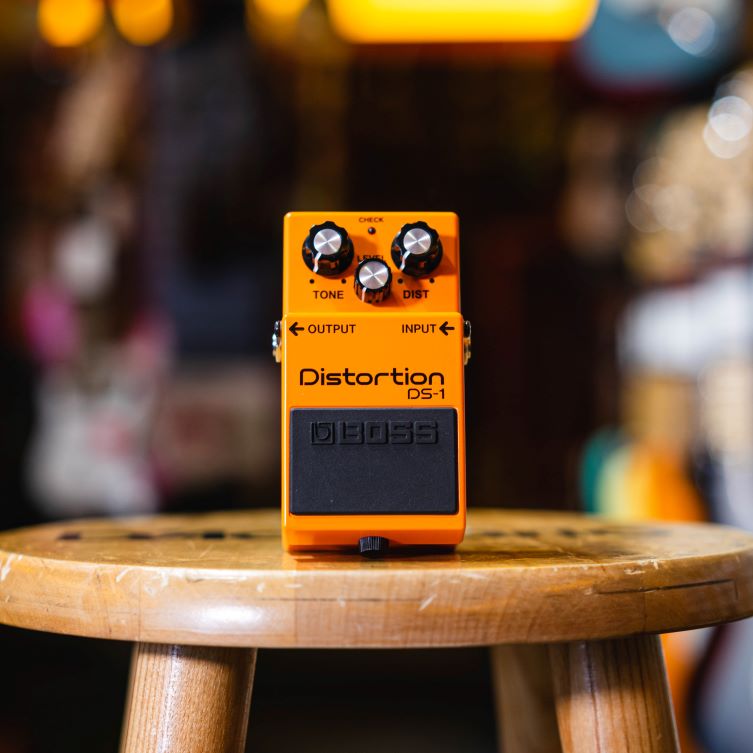
Fuzz Pedals
The most extreme of the distortion pedals, fuzzes create a very thick, fuzzy and intense type of distortion. You can get a variety of different sounds from fuzz pedals, from gritty and chaotic to smooth and vintage.
The guitar's signal is altered dramatically by a fuzz pedal which creates rich sustain and harmonics, and in some cases even synth types of tones.
You'll find fuzz pedals used extensively in genres like stoner rock and psychedelia. Some of the most well known examples are the Big Muff Pi, Fuzz Face and Tone Bender.
Boost Pedals
Boost pedals aren't technically distortion pedals but they can push the guitar's signal and overdrive an amplifier or another distortion pedal. Their main job is to provide a volume and gain boost, which lets the player push their tone further and create a more driven sound.
Understanding Distortion Effects
The effect of distortion and a distortion pedal can significantly shape your tone. So understanding how it works is useful to allow you to get the most from it.
How Distortion Affects Guitar Tone
Distortion introduces clipping and saturation to the guitar signal. Clipping is when the waveform has the top and bottom of it removed which results in a more aggressive and driven sound compared to the clean signal.
You can then choose how much distortion and how intense it is depending on the pedal you're using and the settings it has.
Different Types of Distortion
As mentioned earlier, there are different types of distortion pedals and they reflect the types of distortion available. For example - you might want a crunchy distortion for the rhythm parts of classic rock or heavily saturated distortion for the modern metal.
You can try different distortion pedals and adjusting their settings letting you experiment with varying levels of gain and sustain. They range from some offering only light amounts of gain and crunch through to the super high gain and uber fuzzes.
One of the best parts of distortion is its ability to enhance sustain and the harmonics of what you're playing. A good distortion pedal can not only transform your sound through emphasising harmonics but add depth and sustain to your playing.
Tips for Achieving Desired Distortion
- Experiment with Different Distortion Pedals: Try out different distortion pedals to find the one that you like most. Each pedal will have its own unique characteristics and some will suit your style and sound far more than others. So spend some time reading reviews, watching demos and trying them out in person if possible to find the right fit for your desired sound.
- Adjust Gain and Level Settings: The gain or distortion control on the pedal determines the amount of distortion added to your signal. Higher gain settings will give you more aggressive and saturated tones while lower settings offer a milder overdrive. Try experimenting with different gain levels to find the right balance for your playing style. Adjusting the level control can also help you match the volume of your distorted tone to your clean tone.
- Tweak Tone Controls: Most distortion pedals feature tone controls such as bass, mid, and treble. Adjusting these can help you find the right balance and avoid excessive muddiness or harshness.
- Combine Distortion with Other Effects: Distortion works well in combination with other effects. Try using distortion with modulation effects like chorus, flanger or phaser. Alternatively experiment with delay and reverb to add depth and ambiance to your distorted sound. Combining effects can lead to interesting and different tones.

What to Consider When Choosing a Distortion Pedal
Getting the right distortion pedal can open your playing and help you find your sound. So it's important you make the right choice when buying one. These are some key factors to consider:
- Personal Playing Style and Genre Preferences: The type of music you play is going to be the biggest factor in which pedal you go for. You won’t want a very high gain pedal that is designed for metal if you're a blues guitarist, and vice versa.
- Types of Pickups and Guitars: It's also important to think about the type of pickups and guitars you use. Single-coil pickups tend to respond differently to distortion compared to humbuckers. That's why it's a good idea to try a bunch of pedals first, or do a fair amount of research, so you can find the ones that work best with your gear.
- Budget: Distortion pedals range from affordable through to very expensive. But while the expensive options will usually have more features and be built to a higher standard there are lots of great budget-friendly options that deliver impressive tones. So even if you're on a tight budget you can still find a top pedal that won't break the bank.
- Features to Look For: There may be some specific features you want from your pedal. For example, some pedals offer tone-shaping controls, allowing you to adjust gain, tone, presence etc. Others may include things like built-in EQ, boost functions, or multiple voicings. If these are important to you you'll want a pedal that has them but otherwise you can stick to one that's more straightforward and cheaper!
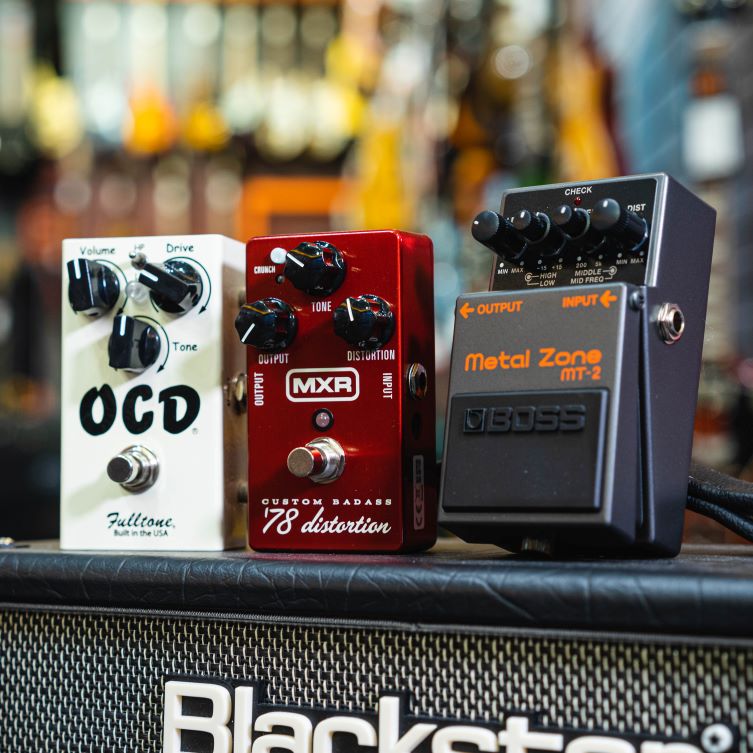
Setting Up and Using Distortion Pedals
Once you've decided on and got your pedal you need to set it up properly. You may have an amazing distortion pedal but it'll be a waste if you don't know how to make the most of it.
Here are some essential steps to follow:
1. Proper Placement in the Chain
Where you place your distortion pedal within the signal chain affects the overall sound. The most common place to put a distortion pedal is after effects like phaser or wah and before time-based pedals such as reverb or delay.
If you're using multiple distortion and overdrive pedals then it's more of a personal choice which comes first. I prefer the lower gain pedal to come before the higher gain one but either way is fine.
It's best to trust your ears though and try different orders. What works for you might not necessarily be the conventional wisdom.
2. Adjusting the Settings for Desired Tone
Start with all the pedal's controls set at a neutral position. Gradually increase the gain listening to how it affects your tone.
If your pedal has additional controls like tone, level etc. then experiment with them seeing what they do. Make small adjustments until you achieve the desired sound and take note of the settings that work well for certain styles.
3. Tips for Dialling in the Right Amount of Distortion
It can be a real balancing act to find exactly the right amount of distortion. Too much gain will muddy your sound while too little might not be enough for the tone you're aiming for.
Try beginning with a moderate amount of gain and gradually increase or decrease it while playing to find the sweet spot that you're after. As you make adjustments pay attention to the clipping and saturation the pedal is producing and stop when you've reached the level that suits.
Use different gain settings on your distortion pedal to find the sweet spot. The smallest adjustments can result in really noticeable changes so listen closely and go slowly until you're happy with the result.
It's also a good idea to focus on how the gain setting responds to your playing dynamics. Some pedals will respond differently to how hard or soft you play. Think about whether you want a pedal that cleans up when you play softly or keeps a consistent level of distortion however you play.
If you're recording or playing with others make sure you test your pedal and how you've set it within the band mix. You don't want it to overpower everyone else but rather sit well within the mix.
A word of caution: avoid dialling in too much gain. All you'll end up with is an overly compressed and noisy sound with very little clarity.
Top Distortion Pedals for Different Genres
As we've already touched on, different types of distortion pedals sound very different. And so certain pedals are going to be better suited for certain genres and styles of music.
So if you need some help picking a distortion pedal for a specific genre these recommendations should get you started.
Distortion Pedals for Rock
Pro Co Rat: An absolute classic choice for rock. It's one of the most well known and heavily used distortion pedals of all time and for good reason. It delivers a thick and aggressive distortion with plenty of sustain.
Fulltone OCD: One of the most versatile overdrive pedals out there and very quickly gained a great reputation for its dynamic response and clear tone. It can do pretty much everything from gritty overdrive to heavy distortion and anything in between.
BOSS DS-1: A little unfairly maligned as it's often a beginner guitarist's first distortion pedal, the DS-1 is far better than its critics will tell you. Considering its affordable price it punches above its weight and provides a powerful distortion sound that is suitable for both classic and modern rock.
Distortion Pedals for Blues
Ibanez TS9 Tubescreamer: An iconic overdrive pedal that is a great choice for blues (and also rock for that matter). It enhances the warmth and responsiveness of your tone which is ideal for bluesy breakup and smooth lead playing.
Fulltone Plimsoul: Amazingly touch sensitive and straddling the line between the softer overdrive sound and harder clipped distortion, the Plimsoul delivers smooth, harmonically rich distortion that retains the nuances of your playing.
BOSS Blues Driver: A cracking pedal that is a real all rounder. Although as its name suggests it's a bit of a blues specialist. It offers a range of bluesy crunch tones and goes from mild breakup to creamy overdrive.
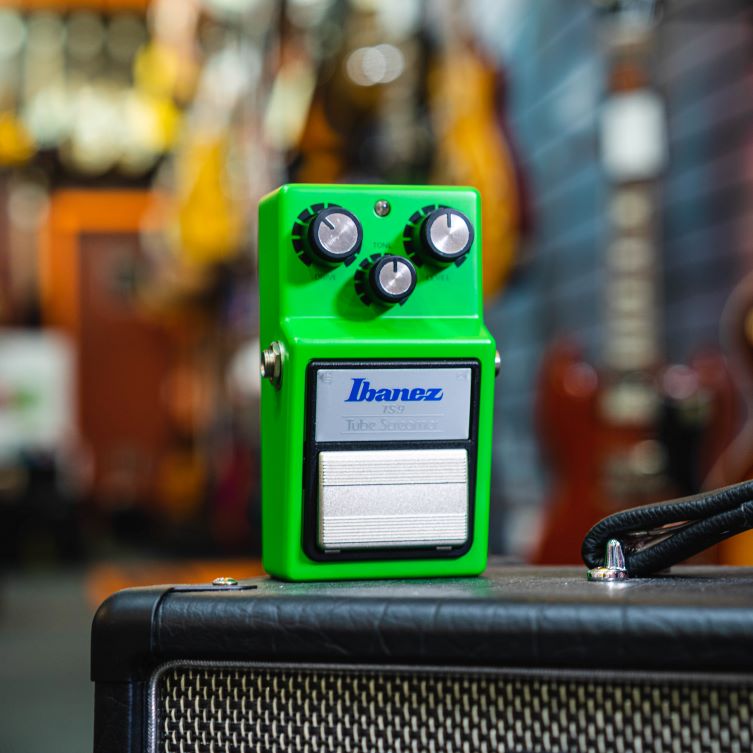
Distortion Pedals for Metal
Mesa Boogie Throttle Box: Mesa Boogie are known for their high gain amps and the Throttle Box delivers that in spades. Although it's capable of dialling in lower gain tones - think classic rock and blues - it really shines for aggressive metal and rock, giving you crushing lows and searing highs.
Wampler Triple Wreck: Known for its brutal gain and tight low-end response, the Triple Wreck is a beast of a distortion pedal. If you're playing high gain metal or djent then you're going to struggle to find a better pedal to suit your needs.
MXR Fullbore Metal: Amazing saturation and relentless gain is on offer with the MXR Fullbore making it the go to choice for modern metal. With a noise gate and scoop switch it's got flexibility to go along with it's bone-crunching distortion.
Distortion Pedals for Indie/Alternative
Electro-Harmonix Big Muff Pi: A legendary fuzz pedal that adds a thick and gritty texture but without losing clarity when playing chords. It's a staple of indie rock and seen on so many pedalboards it's hard to recommend anything else!
JHS Angry Charlie: An amp-in-a-box pedal inspired by classic British amplifier tones, the Angry Charlie provides a wide range of medium to high-gain distortion that is perfect for dirty rock n roll.
EarthQuaker Devices Plumes: The ideal pedal for indie rock due to its jangle-y and gritty sound. You can go from alternative and indie tones to garage rock and heavier saturated sounds with the flick of a switch.
Tips for Getting the Best Distortion Tone
Getting the best distorted tone can take a lot of experimenting and, frankly, annoying fiddling. These tips can help you get the most out of your distortion pedal.
1. Tweak the EQ
When dealing with high gain a lot of players make the age old mistake of scooping the mids and thinking everything sounds great. Playing alone at home this would be okay, but in a band, your sound may not be heard. Instead, don't avoid mids and try to EQ your pedal properly.
2. Use Less Gain
There are times when huge amounts of gain is appropriate and necessary. But often turning down the gain will make you sound so much better. Less gain can improve your sound by adding dynamics and clarity. We often use too much, but reducing it can help so your sound doesn’t get lost. It's also one of the simplest things you can do to try to improve how you sound!
3. Playing Technique
The way you play can have as much of an impact on how you sound as much as any pedal. Your attack and picking dynamics will play a big role in your tone regardless of the pedal or level of distortion you're using. So don't always look to your gear to solve any issues you're having with your tone.
4. Consider the Amp and Speaker Combination
The interaction between your distortion pedal and amplifier/speaker combination is important too. Different amplifiers and speakers have distinct characteristics that can either complement or clash with certain distortion pedals. It may mean you have to try a few pedals or amps to find the right setup and that gives you exactly what you want.
Hopefully you now have a better understanding of distortion pedals and feel more confident about choosing one. Experimentation is key, so don't be afraid to embark on your own exploration of the world of distortion pedals and enjoy the creativity and inspiration they can bring.
Author: Andy Fraser
Bio: Andy Fraser is guitarist, guitar teacher and owner of Guitar Inside Out, a guitar blog that aims to help guitarists with the knowledge, resources and inspiration they need to unlock their full potential.

